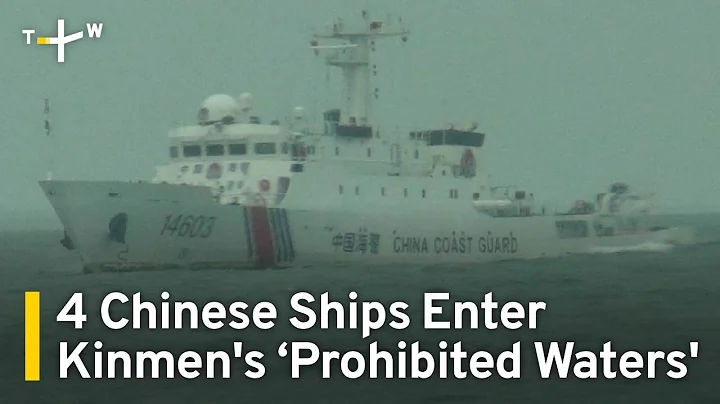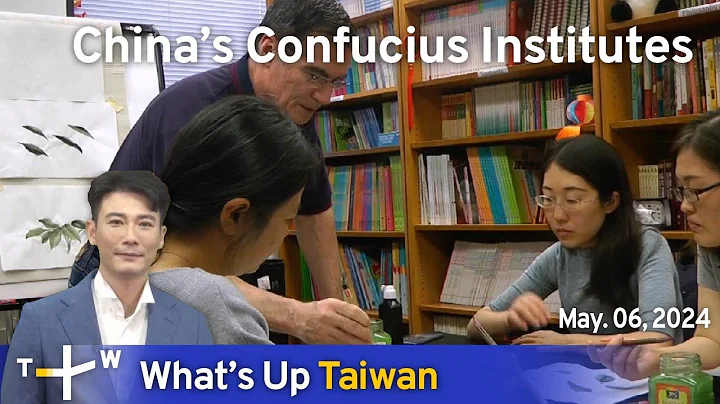Wanhua, formerly known as Menga, was the most prosperous area in northern Taiwan during the Qing Dynasty and the birthplace of today's Taipei. Taiwanese often say "one city, two deer and three menga". The three most prosperous port cities in Taiwan during the Qing Dynasty refer to Tainan Fucheng, Changhua Lugang, and Taipei Menga.
However, I had never heard of Monga before the movie "Monga" was released. All that is known is its modern name, Wanhua. The impression of Wanhua is that it is a place where dragons and snakes are mixed. It is a veritable mix of dragons and snakes - the big man has dragon-shaped tattoos on his body, and the night market is full of snake shops.
I went to Wanhua when I was a kid, because of Huaxi Street. In those days, there was no so-called tourist night market, and Huaxi Street was already a popular tourist attraction. There is a free "performance" every night in the market. The owner of the snake shop is shouting and peeling the snake meat raw, with the liver and intestines exposed, and taking out the snake blood and snake gall with neat gestures. The onlookers take it on the spot, and drink the blood with pride. The air is full of blood and blood. Murderous...
Such a horrifying scene, to a child's eyes, is absolutely unprecedented and shocking, and it is still impressive to this day.
In Wanhua at that time, the women were very coquettish and the men were fierce. The narrow alleys like a trance array seemed to hide some invisible secrets, and even the lights were particularly ambiguous.
The Taiwanese movie "Monga" was released in 2010, recreating the Wanhua landscape in the 1980s. I still remember that I watched this movie alone in a Hong Kong cinema. After watching it, I just felt that the story of teenage gangsters and gang fights is not as exciting as a Hong Kong movie. Looking forward to seeing the nostalgia of Taiwan, yesterday in the movie is obviously not a good one.
Thinking back, since I chose the Monga theme, it would be impossible to have a rose-colored aesthetic. The struggle between prostitutes and gangsters and gangsters, the naked dark side, this is Wanhua.
Later, I passed through Taipei and had the opportunity to stay overnight. When booking the hotel, I only knew the location was "near Ximending". I saw that the address was Zhonghua Road. I checked online and found that it was in the Guangzhou Street area. Just walk past it and you'll find Longshan Temple. Regarding the surrounding environment of the hotel, the biggest selling point should be Menga Bar, but the publicity points are concentrated in Ximending. At that moment, I decided that during this trip I would take a good look at Wanhua and write about Menga.
It was already dark when we arrived in Taipei. Passing by Wanhua, the red archway of Huaxi Street flashed outside the car window. The night market was bright and lively, and the shops were neatly organized. There were still some vague lights in the old alley, and before I had time to take a closer look, I had already arrived at the hotel.
I got up early the next morning and walked along Guangzhou Street. Within a few minutes, we arrived at the Native Education Center in Bopiliao, the starting point of the originally planned visit. At first glance, the opening time has not yet come. So I walked casually along Kunming Road, next to Laosong Elementary School, and unknowingly came to the second section of Guiyang Street. Looking through the information at hand, many scenes in the movie "Monga" are concentrated on this street.

Bopiliao Old Street was an area with extremely busy commercial transactions in the early days. It is the most complete old street type and building preserved from the Qing Dynasty to the present.
Enter the movie scene
Bopiliao covers the block surrounded by Kangding Road, Guangzhou Street and Kunming Street. It is the only remaining Qing Dynasty street in Taipei City today. It preserves quite complete Qing Dynasty street patterns, traditional Qing Dynasty shophouses, and Japanese rule The era and the reconstruction after the liberation have witnessed the development of Menga City Street and it has become a representative old street with Menga characteristics.
The unique place name. Some people think it means peeling bark, because the wood cut down in the early days was transported to Menga and peeled here; others think it means skin peeling, because there was an industry of slaughtering animals to make leather here. However, according to scholars' research, it is believed that "peeling" and "beipi" have the same pronunciation in Taiwanese, and should be derived from the former.
In the early days, Bopiliao was an area extremely busy with commercial transactions. This block is adjacent to Laosong Elementary School. During the Japanese occupation, the government planned this land as the school's campus, and no reconstruction or additions were allowed. Therefore, the entire block was inadvertently preserved, creating the most complete old street from the Qing Dynasty to the present. Type and architecture.
At the end of August 2009, after six years of renovation, Bopiliao Old Street was finally completed and officially opened to tourists.In addition, the movie "Monga" was filmed here, and the real props set up during the filming were left for the public to visit after filming was completed. This attracted many young people to come here to take photos and check in, and it immediately became one of the most popular attractions in Taipei.

The old business name hangs on the storefront.
The old street has replicated the landscape of the past. There are nostalgic movie posters on the street, and there are many old-fashioned business signs. They are replicas of hair salons, frame shops, watch shops, paper paste shops, and Western medicine pharmacies from thirty or forty years ago. Among them, you can still see the old ones. The Times, medicine bags, medicine boxes, wigs and other physical items. However, when you walk into these "stores", the interior decoration has a completely new look, and the indoor space is used for exhibitions. There is also the larger Taipei City Native Education Center in the neighborhood, which has hosted various related themed exhibitions for a long time.

Taipei City Native Education Center holds related themed exhibitions for a long time.
To better understand the actual historical scene, it is recommended to ask for a brief introduction when visiting. The map is printed with an explanation of the original appearance of the historical scene. Yongxing Pavilion is engaged in ship trading, Xiuying Tea House, which has been operating for more than 80 years, is a famous local traditional tea table shop, Weiling Altar is an altar for rituals, and Song Xiexing is engaged in selling rice. , Fengxiang Bathhouse is a traditional bathhouse, which also includes the residence of Lu Achang, a famous doctor in Menga, and the residence of Zhang Taiyan during his stay in Taiwan... While walking and comparing, you can roughly imagine the style of the old street back then.

Bopiliao Old Street replicates the landscape of that time, with nostalgic movie posters plastered on the street.
The Three Great Temples of Menga
The "Miaokou" of the Miaokou Clan's stronghold in the movie was filmed at Qingshui Rock in Menga. The small space in front of the temple is where the movie was set. The temple’s archway is also clearly visible on the movie poster.
Even if you haven’t seen the movie, the historic Menga Qingshui Rock is worth a visit. Qingshuiyan is commonly known as Menga Patriarch Temple. Together with Mengga Longshan Temple and Dalongdong Baoan Temple, it is known as the three major temple gates in Taipei. It is also collectively known as the Three Gorges Patriarch Temple and Tamsui Patriarch Temple as the three major Patriarch Temples in Taipei.
Qingshui Rock was built in 1787 and is dedicated to the founder of Qingshui. In front of the middle door of the front hall of the Patriarch Temple, there is a pair of sturdy dragon pillars; the gables on both sides have brick carving patterns from the late 18th and early 19th centuries, which are the oldest existing works of art in the temple. In addition, the imperial titles of the Qing Dynasty are also engraved on the beams, stone walls, and dragon pillars. Therefore, Menga Qingshuiyan was once known as the most unique and artistic Taiwanese temple in the mid-Qing Dynasty.

Menga Qingshui Rock, the small space in front of the temple is where the movie is set.
From Qingshuiyan, you can walk to Mengga Qingshan Palace, where the film's promotional footage was filmed. The birthday of Qingshan Palace on October 23rd of the lunar calendar every year is a grand celebration in Wanhua area. The activities start from the day before. During this period, there are games to welcome the gods, parades around the territory, and huge crowds of people.
The most famous temple in the Menga area is Longshan Temple. It was first built in 1738 and enjoyed a very high status at the time. Whether it was praying for blessings and eliminating disasters, gathering for meetings, or even fighting in the suburbs in the past, Longshan Temple was the command center. All documents stamped with the seal of Longshan Temple also have a very formal effect. It can be imagined that the historical development of the temple and Menga are closely related.
The temple building has undergone many major renovations, and the stone carvings, wood carvings, paintings and layouts are all extremely exquisite. When visiting one of them, what impressed me most was the endless stream of tourists and pilgrims. The halls were full of incense, and the tables were full of offerings. Tourists of different skin colors, men, women, old and young, holding incense sticks, crowded around each other, and the crowds continued.
Characteristic industry streets
In the movie "Monga", the two male protagonists' families ran a green grass shop and a Buddhist tools shop respectively, reflecting the style of the characteristic industry streets that emerged around Longshan Temple in the early days.
Due to the strong incense, the area around Longshan Temple is characterized by the concentration of Buddhist tools shops. There are many Buddhist shops along this section of Xiyuan Road. You can see various large and small statues of gods in the shops. There are many time-honored shops that have been passed down for generations, and even century-old shops.
In the small alleys of Xichang Street, there are more than a dozen herbal shops. You can see green and green herbs everywhere. Various roots, fruits, seeds, etc. emit bursts of natural grass fragrance. They are the richest in the Menga area. Traditional and antique professional alleyway.
In the early days of Monga's reclamation, there were many infectious diseases and few qualified doctors, so people relied on Chinese herbal medicines to treat their illnesses. The Longshan Temple area is the center of citizen activities, and because there are medicine sticks in the temple, many believers ask Avalokitesvara Bodhisattva and Huatuo Master for medical treatment. Therefore, many medicine vendors gather near Longshan Temple. According to legend, there were many drug sellers commonly known as "barefoot fairies" who rode rickshaws in this area to sell herbal medicines. Gradually, a green herbal market was formed in the alley.
Today, with advanced medical equipment, there are still a lot of people in Qingcao Alley. It is not only the largest concentration of green herbal medicine in Taiwan, but also one of the famous tourist attractions in Wanhua area. When you are tired from walking, come here to drink a cup of green herbal tea and feel the unique smell in the air.
The most famous street in Monga is of course Huaxi Street, which is also the earliest street in Taipei City. Since Huaxi Street is very close to the pier, it has become a place for boatmen and dock workers to stay, and there are many people coming and going. Many brothels, brothels, and restaurants have opened here one after another. During the Japanese colonial period, it was classified as "Youkuo" (weathered area), and its reputation spread far and wide. After the liberation, it was renamed "Baoduli". In 1997, the Taipei City Government decided to abolish public prostitution, which made Huaxi Street's special business quiet.
Huaxi Street Night Market mainly sells snacks, ranging from mountain products to seafood. Due to its early proximity to the densely populated area with sex-seeking customers, many snake and turtle shops appeared in the night market with the slogan of removing toxins and aphrodisiacs, forming the characteristics of local snacks. Vendors also attract tourists with performances such as snake killing and snake fighting, and sell snake gallbladder, snake wine, and snake soup on site, making it a must-see alternative sightseeing spot for tourists. Huaxi Street was planned as Taiwan's first tourist night market in 1987. A vermilion traditional Chinese palace archway was built at the entrance, which became the first impression of Wanhua for tourists.
Forgotten historical memories
After walking around the whole block, I walked slowly towards Ximending and came to a square inadvertently. There were several Japanese-style architectural ruins left in the bustling city, and I couldn't help but feel curious.
checked the information and found out that the location of "Wanhua No. 406 Plaza" was called "Xinqi Town" during the Japanese colonial period. Later, it was decided by the founder of the Shinshu Honganji sect in Japan as the reserved place for the temple. The official name was " The Taiwan branch of the Jodo Shinshu Honganji sect."

Inadvertently came to a square, where several Japanese-style architectural ruins remained in the bustling city.
The Shinshu Honganji sect first came to Taiwan as a missionary with the army, mainly to express condolences to Japanese soldiers and hold funeral services for the dead. Later, after the situation stabilized, it began to officially station in various places in Taiwan, hoping to educate the Taiwanese people to accept Japanese ideas through the power of religion. .
In 1901, Honganji Temple received approval from the Japanese government and built a temporary main hall, assembly hall, dormitory, etc. near the current site, called "Taipei Villa". Later, it was expanded and renovated several times, and it developed into the large-scale Nishi Honganji Temple, which became the largest Japanese Buddhist temple in Taiwan at that time.
After the war, Nishi Honganji Temple was taken over by the Taiwanese government and was used as a symphony orchestra office, a black jail for prisoners, and a military dependent village for military dependents and retired soldiers. A fire broke out in 1975 and the temple burned down. After the fire, people still moved in one after another, using the remaining buildings of Nishi Honganji Temple, partitioning and decorating them as temporary residences. It was not until 2005 when the government demolished the illegal buildings that they discovered that the remains of a Japanese Buddhist temple and its ancillary buildings were hidden in this illegal building, and some of the buildings were still intact. The remaining old buildings of Nishi Honganji Temple have just been seen again, and they have also evoked forgotten historical memories.





















